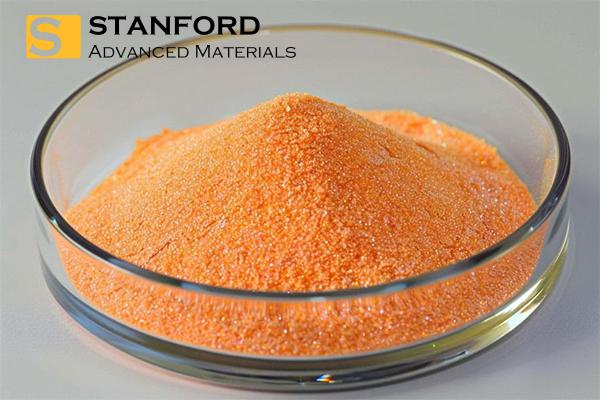Spiro-MeOTAD Description
Spiro-MeOTAD (2,2',7,7'-Tetrakis(N,N-di-p-methoxyphenylamine)-9,9'-spirobifluorene) is a widely used organic semiconductor material, specifically designed as a hole transport material (HTM) in perovskite and other thin-film solar cells. It is one of the most important components in perovskite solar cells, where it facilitates the transport of "holes" (positive charge carriers) from the perovskite layer to the electrode, contributing to the overall efficiency of the solar cell.
Spiro-MeOTAD Specification
|
Appearance
|
light yellow powder
|
|
CAS No.
|
207739-72-8
|
|
Chemical Formula
|
C81H68N4O8
|
|
Molecular Weight
|
1225.43
|
|
Purity
|
≥99.5%
|
|
Melting Point
|
243-248℃
|
Spiro-MeOTAD Applications
- Perovskite Solar Cells: The primary use of Spiro-MeOTAD is in perovskite solar cells, where it contributes to high power conversion efficiencies.
- Organic Light-Emitting Diodes (OLEDs): It is also used in the development of OLEDs, as an effective hole transport layer.
- Dye-Sensitized Solar Cells (DSSCs): Spiro-MeOTAD is used as an HTM in DSSCs as well, furthering its versatility in thin-film photovoltaic devices.
Spiro-MeOTAD Packaging
Our Spiro-MeOTAD is carefully handled during storage and transportation to preserve the quality of our product in its original condition.
10g/glass bottle, or customized.
FAQs
Q1: Why is Spiro-MeOTAD important for perovskite solar cells?
Answer: Spiro-MeOTAD is important for perovskite solar cells because it efficiently transports holes (positive charge carriers) from the perovskite absorber layer to the electrode, helping to improve charge collection and reduce recombination losses. This contributes to the high power conversion efficiency of perovskite solar cells.
Q2: How does doping affect Spiro-MeOTAD’s performance?
Answer: Doping Spiro-MeOTAD with additives such as lithium bis(trifluoromethanesulfonyl)imide (Li-TFSI) and 4-tert-butylpyridine (tBP) enhances its conductivity and hole mobility. These dopants improve the efficiency of solar cells by increasing charge carrier mobility and reducing resistive losses.
Q3: Are there alternatives to Spiro-MeOTAD for use in solar cells?
Answer: Yes, researchers are developing alternative hole transport materials (HTMs) to replace or improve upon Spiro-MeOTAD. These alternatives aim to offer better stability, lower cost, and higher performance. Some examples include small molecules, polymers, and inorganic HTMs such as NiO and CuSCN.
 Get a Quote
Get a Quote
